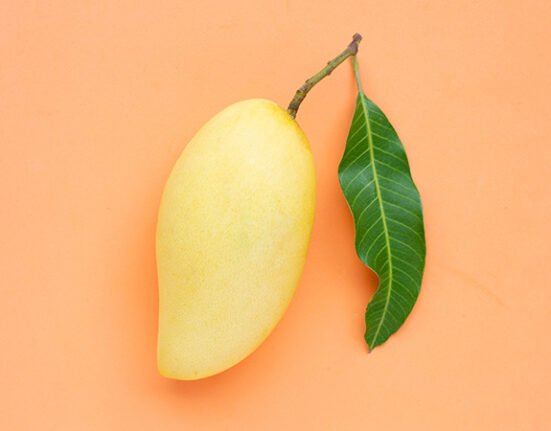When designing a mini indoor garden for a child’s playroom, it is essential to select plants that are both safe for kids and easy to maintain. To ensure safety, opt for non-toxic plants that pose no risk if accidentally touched or ingested. Spider plants, snake plants, and succulents are excellent choices, as they are low-maintenance and harmless to children.
Additionally, consider plants with vibrant colors or unique textures that can captivate your child’s interest in gardening. Beyond safety and aesthetics, it is crucial to choose plants that are easy to care for, particularly for young children who may lack the patience or attention span for high-maintenance plants. Select plants that require minimal watering and can thrive in indoor environments with limited sunlight.
By making informed plant choices, you can create a safe and engaging space for your child to learn about nature and develop a sense of responsibility.
Key Takeaways
- Choose non-toxic and easy-to-care-for plants for a child-friendly indoor garden
- Create a safe and accessible garden space for kids by using child-sized tools and organizing plants at their eye level
- Teach children about plant care and responsibility by involving them in watering and caring for the plants
- Incorporate playful and educational elements into the garden design, such as colorful planters and plant identification cards
- Engage kids in DIY mini garden projects to foster creativity and a sense of ownership, such as making their own terrariums or fairy gardens
Creating a Safe and Accessible Garden Space for Kids
Choosing the Right Location
When designing a mini indoor garden for your child’s playroom, it’s essential to select a suitable location that is both safe and accessible for kids. A low table or shelf that is within your child’s reach is ideal. Ensure the area is well-lit and has easy access to water for plant care.
Child-Friendly Gardening Tools and Accessories
To make the gardening experience more enjoyable and manageable for little hands, consider using child-friendly gardening tools and accessories. These can include small watering cans and kid-sized gloves. This will not only make gardening fun for your child but also help them develop a sense of responsibility.
Ensuring Safety in the Garden
In addition to accessibility, it’s crucial to create a safe environment for your child’s indoor garden. Avoid using any sharp or hazardous materials in the garden design, and ensure all pots and containers are stable and secure to prevent accidents. Consider using child-proofing techniques, such as placing barriers around the garden area to keep curious toddlers from getting into the plants. By creating a safe and accessible garden space for kids, you can encourage their interest in gardening while ensuring their well-being.
Teaching Children about Plant Care and Responsibility
One of the most valuable aspects of creating a mini indoor garden for your child’s playroom is the opportunity to teach them about plant care and responsibility. Use the garden as a hands-on learning experience to teach your child about the importance of watering, sunlight, and soil for plant growth. Show them how to care for the plants by demonstrating how to water them gently and how to check for signs of growth or distress.
Encourage your child to take on responsibilities such as watering the plants regularly and keeping track of their progress. In addition to plant care, use the indoor garden as a way to teach your child about the natural world and the importance of environmental stewardship. Discuss topics such as photosynthesis, plant life cycles, and the benefits of having plants in our homes.
Encourage your child to ask questions and explore their curiosity about nature through the garden. By teaching children about plant care and responsibility, you can instill valuable life skills and a sense of environmental awareness in them from an early age.
Incorporating Playful and Educational Elements into the Garden Design
| Steps | Materials | Benefits |
|---|---|---|
| 1. Choose a suitable container | Container, soil, small plants, watering can | Teaches responsibility, promotes sensory development |
| 2. Prepare the soil | Potting mix, small shovel | Teaches basic gardening skills |
| 3. Plant the small plants | Small plants, gardening gloves | Encourages appreciation for nature |
| 4. Water and care for the garden | Watering can, spray bottle, gardening tools | Develops nurturing skills |
To make the mini indoor garden in your child’s playroom even more engaging, consider incorporating playful and educational elements into the garden design. Use colorful pots and containers to add a fun and whimsical touch to the garden, and consider adding decorative elements such as figurines or small toys to create a magical and imaginative atmosphere. You can also incorporate educational elements into the garden design by labeling the plants with their names and teaching your child about their unique characteristics.
Another way to make the indoor garden more playful and educational is by incorporating interactive elements such as a mini greenhouse or terrarium that your child can assemble and decorate themselves. This hands-on activity can help them learn about plant ecosystems and the importance of maintaining a healthy environment for their plants. By incorporating playful and educational elements into the garden design, you can create a space that not only nurtures your child’s love for nature but also encourages their creativity and curiosity.
DIY Mini Garden Projects for Kids
In addition to creating a mini indoor garden in your child’s playroom, consider involving them in fun DIY garden projects that they can enjoy and learn from. One idea is to create a fairy garden together, using small plants, miniature furniture, and decorative elements to build a magical world for imaginary creatures. This project can spark your child’s creativity and imagination while teaching them about plant care and design principles.
Another fun DIY project is to create a sensory garden with your child, using plants with different textures, scents, and colors to engage their senses. This project can help them learn about the diversity of plant life while providing a sensory-rich experience that stimulates their curiosity and awareness of the natural world. By involving your child in DIY mini garden projects, you can foster their love for gardening while creating lasting memories together.
Benefits of Having an Indoor Garden in a Child’s Playroom
Hands-on Learning and Developmental Benefits
Not only does it provide a hands-on learning experience for children to learn about nature and responsibility, but it also offers a range of developmental benefits. Gardening can help children develop fine motor skills, patience, and an understanding of cause and effect as they care for their plants and watch them grow.
Connecting with Nature and Environmental Stewardship
It also provides an opportunity for children to connect with nature and develop a sense of environmental stewardship from an early age.
Positive Effects on Mental Well-being
In addition to the developmental benefits, having an indoor garden in your child’s playroom can also have positive effects on their mental well-being. Research has shown that spending time around plants can reduce stress, improve mood, and promote relaxation, which can be especially beneficial for children who may be dealing with anxiety or hyperactivity. By providing a calming and nurturing environment, an indoor garden can help children feel more connected to nature and promote their overall well-being.
Tips for Maintaining a Mini Indoor Garden with Kids
Maintaining a mini indoor garden with kids can be both fun and challenging, but with the right approach, it can be a rewarding experience for both you and your child. One tip is to establish a regular watering schedule that your child can participate in, whether it’s daily or weekly depending on the needs of the plants. This can help them develop a sense of responsibility while ensuring that the plants receive consistent care.
Another tip is to involve your child in regular plant maintenance tasks such as pruning, repotting, and fertilizing. This can help them learn about the different aspects of plant care while providing them with hands-on experience in nurturing their garden. Additionally, encourage your child to observe their plants closely and take note of any changes or growth they notice, which can help them develop an appreciation for the natural world around them.
In conclusion, creating a mini indoor garden for your child’s playroom can be a wonderful way to foster their love for nature while providing them with valuable learning experiences. By choosing the right plants, creating a safe and accessible garden space, teaching children about plant care and responsibility, incorporating playful and educational elements into the garden design, involving them in DIY mini garden projects, reaping the benefits of having an indoor garden in a child’s playroom, and maintaining it with kids through regular tasks, you can create a nurturing environment that promotes their overall well-being while nurturing their curiosity and love for nature.
FAQs
What is a mini indoor garden?
A mini indoor garden is a small garden created indoors, typically in a container or small space, using a variety of plants and decorative elements.
Why create a mini indoor garden for a child’s playroom?
Creating a mini indoor garden for a child’s playroom can provide a hands-on learning experience for children, teaching them about plant care and responsibility, while also adding a touch of nature to their indoor environment.
What are some suitable plants for a mini indoor garden in a playroom?
Suitable plants for a mini indoor garden in a playroom include low-maintenance and child-friendly plants such as succulents, air plants, spider plants, and small herbs like basil or mint.
How can I create a mini indoor garden for my child’s playroom?
To create a mini indoor garden for your child’s playroom, you can start by selecting a suitable container, choosing the right plants, adding decorative elements like small figurines or rocks, and ensuring proper lighting and watering for the plants.
What are the benefits of having a mini indoor garden in a child’s playroom?
Having a mini indoor garden in a child’s playroom can provide numerous benefits, including teaching children about nature and plant care, improving air quality, and creating a calming and nurturing environment for play and learning.





